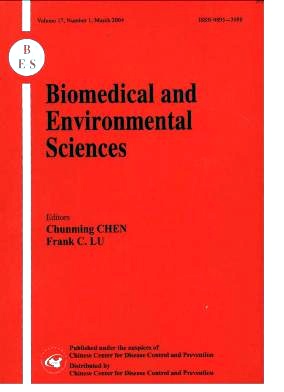Chelation in Metal Intoxication XLVI:Synthesis of Some α-Mercapto-β-Substituted Aryl Acrylic Acids and Their In vitro Cadmium Chelating Ability
-
Key words:
- Acrylic acid /
- Cadmium /
- In vitro chelation /
- IR/NMR spectra /
- Rat /
- Synthesis
Abstract: Objective To synthesize some new α-mercapto-β-substituted aryl acrylic acids, characterize them and investigate their in vitro cadmium chelating ability. Methods Six α-mercapto-β-substituted aryl acrylic acids were prepared by the alkaline hydrolysis of 5-(aryl methylene)rhodanines, obtained from the condensation of substituted aldehydes and rhodanine following the reported procedure. The new compounds were characterized by elemental analysis, infrared (IR) and nuclear magnetic resonance (NMR) spectroscopy. The liver and kidney from cadmium chloride pre-administered rats were homogenized and their nuclear mitochondrial fraction (NMF) and supernatant cytosol fraction (SCF) were separated. A measured volume of each fraction was dialyzed separately using "dialysis sack" against buffered-KCl medium containing a compound in the final concentration of 1×10-3 mol/L for 3 h at 37℃C. The whole content of "sack" was subjected to cadmiumestimation following digestion with conc. Nitric acid was detected using flame atomic absorption spectrometer. Results The in vitro screening showed that α-mercapto-β-(p-methoxyphenyl)acrylic acid (compound 2) and α-mercapto-β-(m-methoxy, p-hydroxyphenyl) acrylic acid (compound 4) were more effective than α-mercapto-β-thienyl acrylic acid (compound 1) and α-mercapto-β-(p-dimethylaminophenyl) acrylic acid (compound 3) in mobilizing cadmium as their dialyzable chelates. The presence of a methoxy group on the phenyl moiety (compounds 2 and 4) increases the metal chelating ability of mercapto acrylic acids. Conclusions Compounds 2 and 4 seem to have accessibility to the cellular system and capability of chelating-out the intracellularly bound cadmium.
| Citation: | MADHUMITA CHATTERJEE, VINOD K.DWIVEDI, KIRTI KHANDEKAR, SUSHIL K.TANDON. Chelation in Metal Intoxication XLVI:Synthesis of Some α-Mercapto-β-Substituted Aryl Acrylic Acids and Their In vitro Cadmium Chelating Ability[J]. Biomedical and Environmental Sciences, 2004, 17(1): 27-32. |







 Quick Links
Quick Links
 DownLoad:
DownLoad: